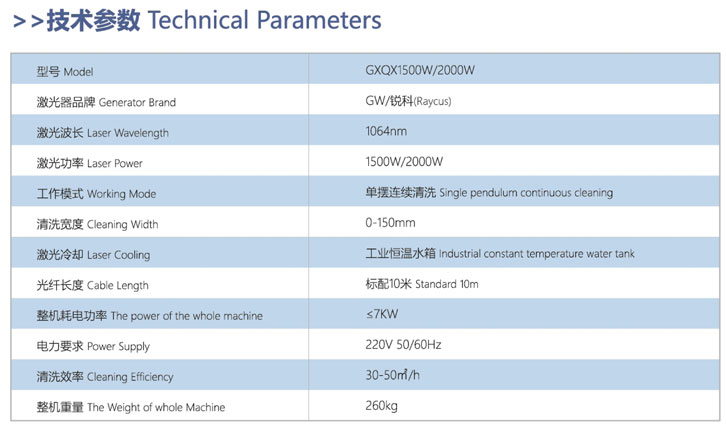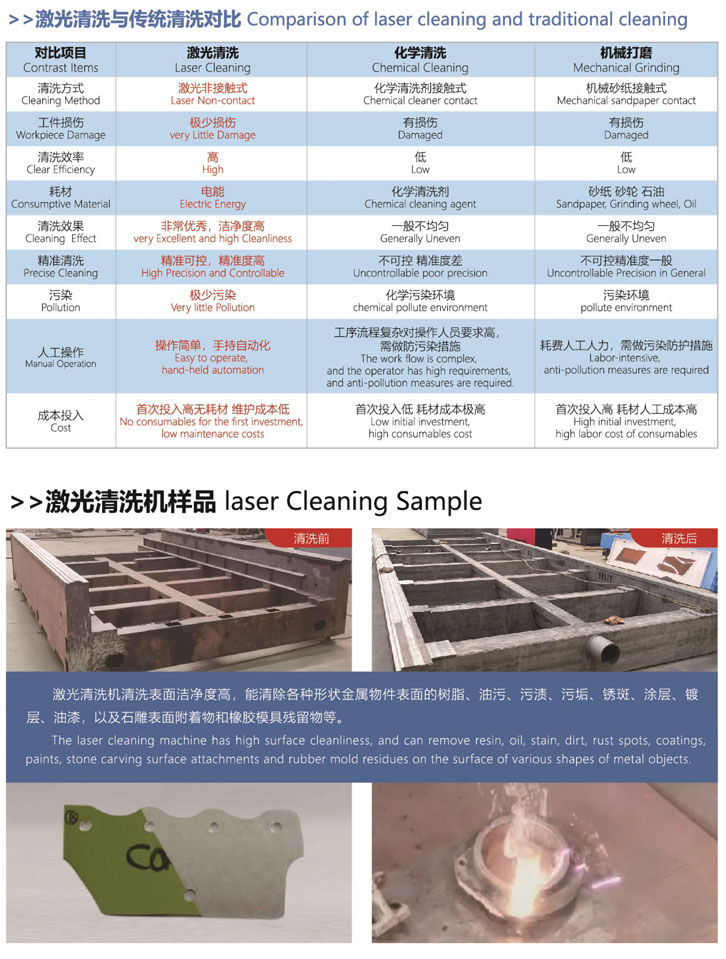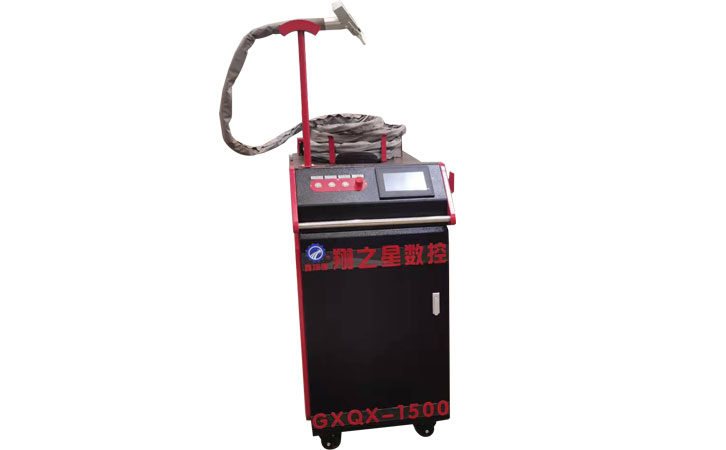Rust occurs when metals undergo oxidation by substances such as oxygen and water vapor in the air. Once rust occurs, it will cause great damage to the metal workpiece, and the degree of rust will change from light to heavy over time. At the same time, the scope of rust will also spread from the surface of the workpiece to the interior of the workpiece, until the entire workpiece is completely corroded. So rust removal is an important thing. Laser rust removal does not require chemical agents or mechanical polishing. Laser rust removal is fast and safe, and can remove rust from various metal materials. High work efficiency, high degree of automation, simple process, no need for subsequent processing work, greatly improving work efficiency, reducing labor intensity of workers, and saving production costs.
operational principle
The process of pulsed Nd: YAG laser cleaning depends on the characteristics of the optical pulses generated by the laser, based on the photophysical reactions caused by the interaction between high intensity beams, short pulse lasers, and pollution layers. The physical principles can be summarized as follows:
The beam emitted by the laser is absorbed by the pollution layer on the surface to be treated.
The absorption of large energy forms a rapidly expanding plasma (highly ionized unstable gas), generating shock waves.
The shock wave causes pollutants to become fragments and be removed.
The width of the light pulse must be short enough to avoid heat accumulation that can damage the treated surface.
Experiments have shown that when there are oxides on the metal surface, plasma is generated on the metal surface.
Plasma is only generated when the energy density is above the threshold, which depends on the removed pollution layer or oxide layer. This threshold effect is crucial for effective cleaning while ensuring the safety of the substrate material. There is a second threshold for the appearance of plasma. If the energy density exceeds this threshold, the substrate material will be destroyed. To achieve effective cleaning while ensuring the safety of the substrate material, it is necessary to adjust the laser parameters according to the situation, so that the energy density of the light pulse is strictly between two thresholds.
Each laser pulse removes a certain thickness of contamination layer. If the pollution layer is thick, multiple pulses are required for cleaning. The number of pulses required to clean the surface depends on the degree of surface contamination. An important result generated by two thresholds is the self-control of cleaning. The light pulse with an energy density higher than the first threshold will continue to remove pollutants until it reaches the substrate material. However, because its energy density is lower than the failure threshold of the substrate material, the substrate will not be damaged.
Laser cleaning can be used not only to clean organic pollutants, but also to clean inorganic substances, including metal rust, metal particles, dust, etc. It has now been widely used.




